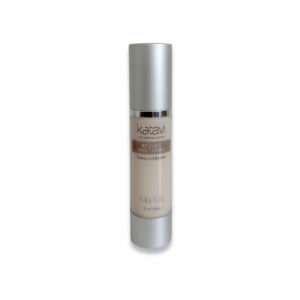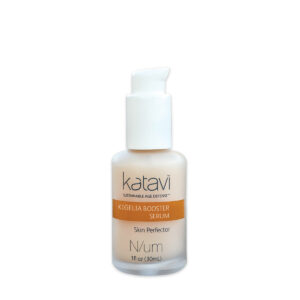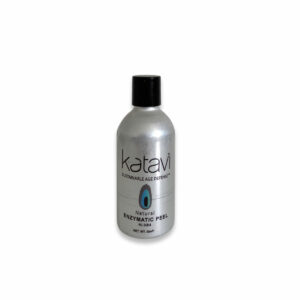Gallbladder removal, or cholecystectomy, is a common surgical procedure for individuals suffering from gallstones or other gallbladder-related issues. While this surgery often resolves painful symptoms, it can also lead to changes in digestion and metabolism. Recently, GLP-1 (glucagon-like peptide-1) receptor agonists have gained attention for their potential benefits in managing weight and metabolic health, even after gallbladder removal. This blog post will explore how GLP-1 works, its benefits for individuals post-cholecystectomy, and practical considerations for integrating this therapy. Understanding these aspects can help patients make informed decisions about using GLP-1 therapy to support their health journey.
Understanding Gallbladder Removal and Its Implications
The gallbladder plays a crucial role in digestion, storing and releasing bile to help break down fats. Here’s a closer look at what happens after its removal:
- Digestion Changes: Without a gallbladder, bile flows directly from the liver into the small intestine, which can alter the digestion of fats. This can sometimes lead to symptoms like diarrhea, bloating, and fatty stools.
- Nutrient Absorption: Changes in bile flow can affect the absorption of fat-soluble vitamins (A, D, E, K) and other nutrients, potentially leading to deficiencies if not managed properly.
- Weight Management: Some individuals may experience weight gain after gallbladder removal due to changes in digestion and metabolism. This can be challenging to manage without proper dietary adjustments and physical activity.
- Metabolic Effects: The absence of a gallbladder can influence overall metabolism and insulin sensitivity, which may have implications for individuals with metabolic syndrome or type 2 diabetes.
Understanding these implications is essential for managing health post-cholecystectomy and exploring supportive treatments like GLP-1 receptor agonists.
The Role of GLP-1 in Post-Cholecystectomy Health
GLP-1 receptor agonists are medications that mimic the action of the naturally occurring hormone GLP-1. Here’s how they work and their potential benefits:
- Appetite Regulation: GLP-1 helps regulate appetite by promoting satiety and reducing hunger. This can be particularly beneficial for individuals struggling with weight management after gallbladder removal.
- Improved Insulin Sensitivity: GLP-1 enhances insulin secretion in response to food intake, helping to regulate blood sugar levels. This can mitigate the risk of type 2 diabetes and improve metabolic health.
- Slowed Gastric Emptying: GLP-1 slows down the rate at which food leaves the stomach, prolonging the feeling of fullness and aiding in portion control. This can be helpful for managing post-surgery digestive changes.
- Enhanced Fat Metabolism: By improving the digestion and absorption of fats, GLP-1 can help address some of the digestive issues that arise after gallbladder removal. This can also support overall weight loss efforts.
These mechanisms make GLP-1 receptor agonists a valuable tool for managing health and weight post-cholecystectomy.
Benefits of GLP-1 Therapy After Gallbladder Removal
Beyond weight management, GLP-1 receptor agonists offer several additional health benefits for individuals post-cholecystectomy:
- Cardiovascular Health: GLP-1 has been shown to improve cardiovascular outcomes, including reducing blood pressure, improving lipid profiles, and lowering the risk of major adverse cardiovascular events.
- Glycemic Control: For individuals with type 2 diabetes or those at risk, GLP-1 therapy can significantly improve glycemic control, reducing HbA1c levels and improving long-term glucose management.
- Reduction in Inflammation: GLP-1 has anti-inflammatory properties, which can help reduce systemic inflammation and improve overall health. This is particularly beneficial for individuals with metabolic syndrome or other inflammatory conditions.
- Enhanced Quality of Life: Weight loss and improved metabolic health can lead to increased energy levels, better physical mobility, and improved mental well-being. Patients often report a higher quality of life when using GLP-1 therapy.
These benefits highlight the multifaceted advantages of GLP-1 receptor agonists, making them an effective option for post-cholecystectomy care.
Potential Side Effects and Considerations
While GLP-1 receptor agonists offer many benefits, it’s essential to be aware of potential side effects and considerations:
- Gastrointestinal Issues: Common side effects include nausea, vomiting, diarrhea, and constipation. These symptoms are usually mild and tend to decrease over time as the body adjusts to the medication.
- Risk of Pancreatitis: Although rare, there have been reports of pancreatitis in patients using GLP-1 receptor agonists. Symptoms include severe abdominal pain, and individuals should seek medical attention if they experience these symptoms.
- Gallbladder Concerns: Although GLP-1 receptor agonists can help with post-cholecystectomy weight management, they may also increase the risk of gallbladder-related issues in individuals who still have their gallbladder. This is less of a concern for those who have had their gallbladder removed.
- Hypoglycemia: When used in combination with other antidiabetic medications, GLP-1 receptor agonists can increase the risk of hypoglycemia. Monitoring blood sugar levels and adjusting other medications as needed can help manage this risk.
Consulting with a healthcare provider and having a management plan in place can ensure the safe and effective use of GLP-1 therapy.
Practical Tips for Incorporating GLP-1 Therapy Post-Cholecystectomy
For individuals considering GLP-1 therapy after gallbladder removal, here are some practical tips to optimize its benefits:
- Consult with a Healthcare Provider: A thorough discussion with a healthcare provider is crucial to determine if GLP-1 therapy is suitable. They can provide personalized advice and monitor your progress.
- Follow Prescribed Dosing: Adhering to the prescribed dosing schedule is essential for achieving optimal results. Use reminders or medication management apps to ensure you don’t miss doses.
- Adopt a Balanced Diet: Complement GLP-1 therapy with a diet rich in nutrient-dense foods. Focus on lean proteins, whole grains, fruits, and vegetables to support weight loss and overall health.
- Stay Hydrated: Drinking plenty of water can help manage gastrointestinal side effects and support digestion. Adequate hydration is also essential for overall health.
- Monitor Progress: Keep track of your weight, blood sugar levels, and any side effects you experience. Regular check-ins with your healthcare provider can help fine-tune your treatment plan.
By following these tips, individuals can effectively incorporate GLP-1 therapy into their post-cholecystectomy care, enhancing their health and weight loss efforts.
Managing Health Post-Gallbladder Removal with GLP-1 Therapy – snippet
Discover how GLP-1 receptor agonists can support weight loss and metabolic health after gallbladder removal. Learn about their mechanisms, benefits, potential side effects, and practical tips for effective use. Optimize your health post-cholecystectomy with GLP-1 therapy.
Related items..
-
Men’s Health Test
$0.00 -
AnteAGE® Eye (15ml)
$105.00 -
AnteAGE® Overnight Brows Serum 3.5ml
$75.00 -
PCA Skin ExLinea® Peptide Smoothing Serum
$120.00 -
Katavi Moisturizing Day Cream
$43.00 -
Katavi Tula Tula – Intensive Night Care
$43.00 -
N/um – Kigelia Booster Serum
$46.00 -
Katavi Hluba – Enzymatic Peel
$30.00 -
Katavi Miracle Hydration Oil
$40.00 -
PCA Skin Hyaluronic Acid Boosting Serum 3oz
$315.00
Sign Up for Monthly Newsletter to Learn & Save
Stay current on promotions, discounts and sales.
Get Your Learn On
























